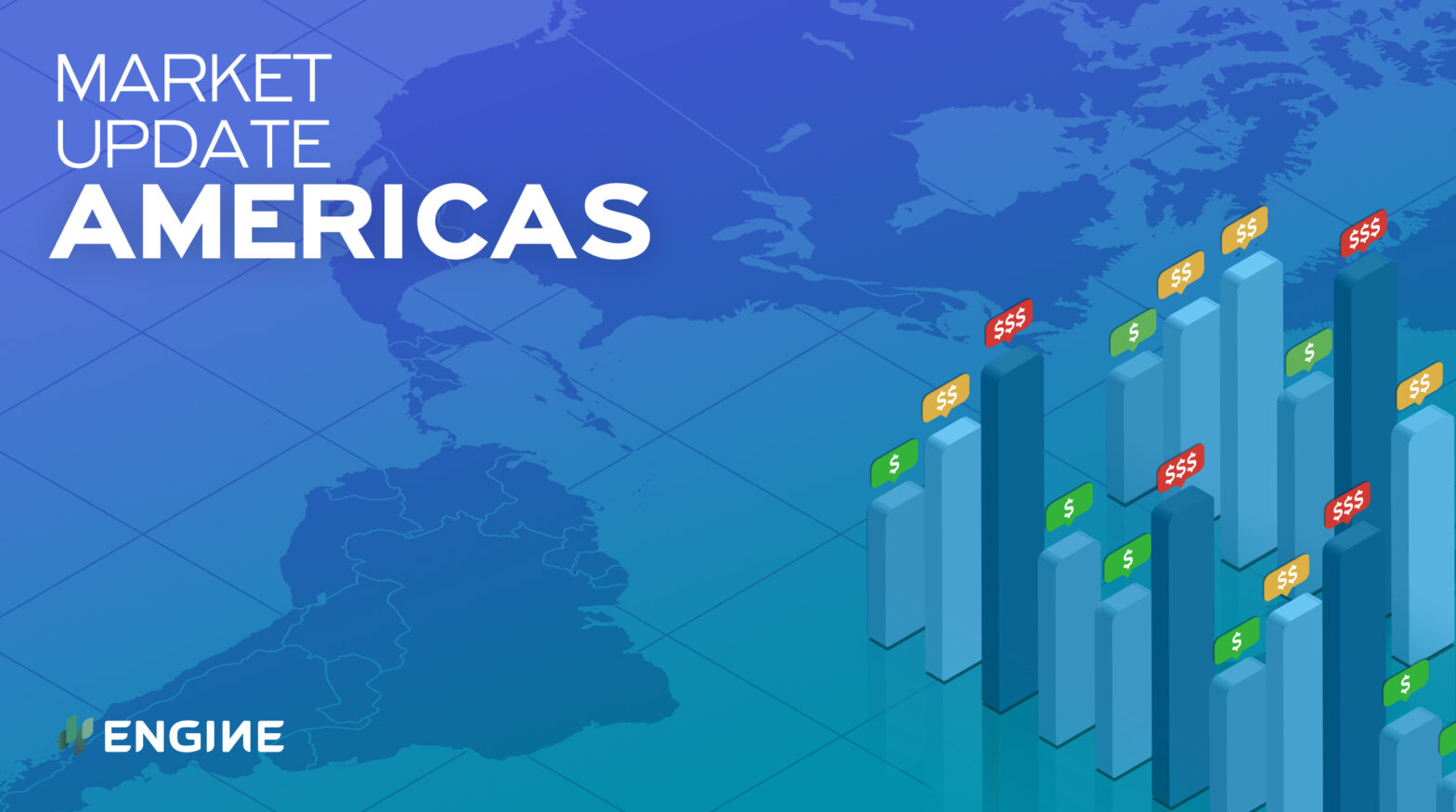Bunker prices have plunged in the Americas amid a 3% Brent price fall on the day.
Changes on the day to 09.30 CST (14.30 GMT) today:
- VLSFO prices down in Houston ($54/mt), New York ($30/mt), Zona Comun ($20/mt), Balboa ($18/mt) and Los Angeles ($15/mt)
- LSMGO prices down in New York ($34/mt), Houston, Balboa and Zona Comun ($24/mt) and Los Angeles ($6/mt)
- HSFO380 prices down in Houston ($29/mt), New York ($13/mt), Los Angeles ($12/mt) and Balboa ($11/mt)
Houston’s VLSFO price has tumbled after several stems were fixed below $500/mt. The stems were combined with LSMGO fixed at just above $600/mt, which also pulled that benchmark down sharply.
The price of HSFO380 has fallen by only just over half as much as VLSFO in Houston, to narrow the port’s Hi5 spread by $25/mt to $102/mt.
VLSFO price drops have outpaced those for HSFO380 across other key bunker ports to narrow their Hi5 spreads, too.
Balboa’s bunker fuel oil prices have held up considerably better than Houston’s. Availability has been tight for prompt dates with certain suppliers in Panama.
Zona Comun’s VLSFO price has come down against a string of Brazilian ports. The Argentinian anchorage location now prices the grade at discounts of $12-14/mt to Paranagua and Rio Grande. Its premium over Santos, which has averaged around $30/mt this yeahas narrowed to $17/mt.
Brent
ICE Brent September futures have shed $2.28/bbl on the day, to $73.94/bbl at 09.30 CST (14.30 GMT).
The futures contract fell amid news of a compromise between Saudi Arabia and the UAE that could develop into a deal for OPEC+ to supply more crude. The parties have made progress in negotiations, but a deal is not there quite yet, the UAE’s energy minister said in a statement yesterday.
“It seems OPEC+ will shortly have a plan to raise output and that is welcomed news, as surging demand had oil market getting too tight,” OANDA market analyst Ed Moya said in a note.
Saudi Arabia and the UAE have locked horns for two weeks over the UAE’s claim to have its baseline production quota updated from October 2018 now that it has greater production capacity.
The market reacted to news of a breakthrough by selling off to de-risk their positions in expectation of an imminent deal that could see OPEC+ pump another 2 million b/d of oil between August and December, and extend their supply restraint management pact from April 2022 to the end of 2022.
Builds in US gasoline and distillate stocks pointed to a slowdown in transport and industrial fuel demand, according to figures from the US Energy Information Administration (EIA). The builds weighed on oil prices even as US commercial crude oil stocks were heavily drawn again and brought down to their lowest level since January 2020.
OPEC predicts demand growth in the US, China and India in particular will lift global demand back to pre-pandemic levels next year, it said in its latest market outlook today.
The EIA revised its near-term Brent price forecasts up by $6/bbl, citing lower global inventories than previously anticipated. It now believes Brent will average $72/bbl in the second half of 2021, and $67/bbl for the whole of 2022.
